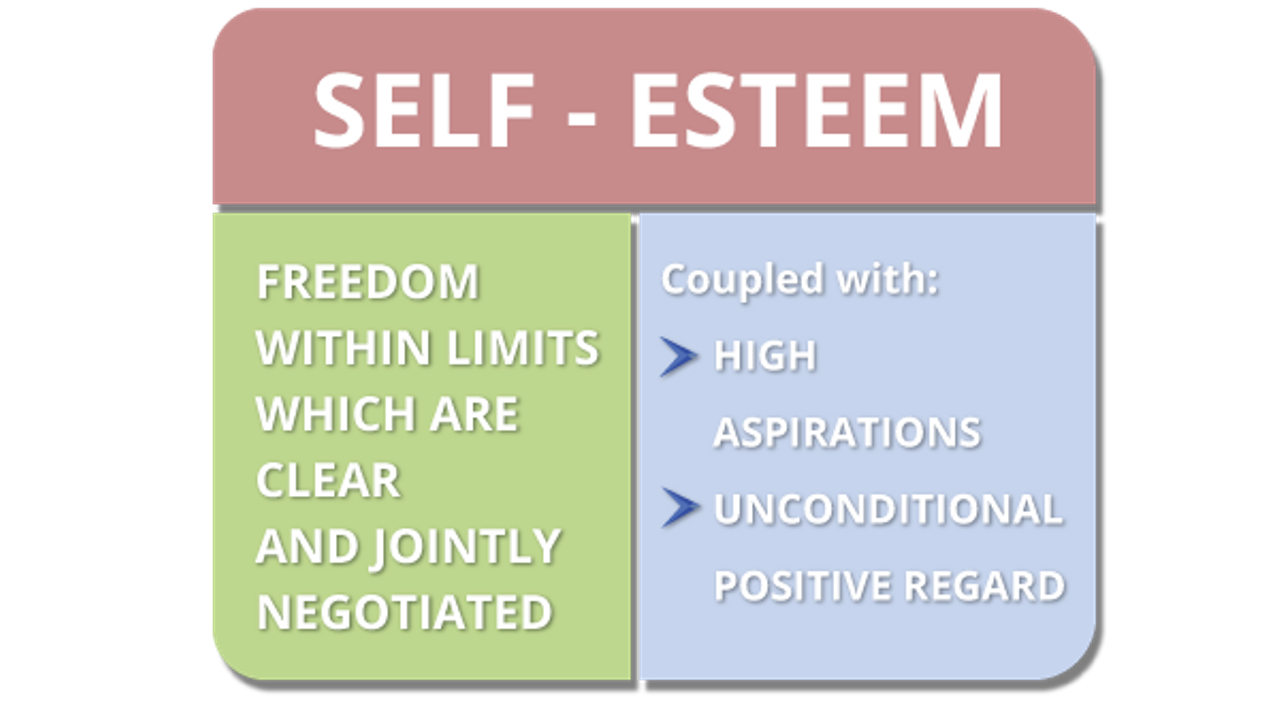Maintaining a healthy self-esteem

Self-esteem is a term used to describe how an individual feels about themselves and their self-worth. It is a judgment that they make of themselves based on opinions that they perceive as belonging to those around them, particularly their significant others e.g. parents, teachers, authority figures. Individuals who are assertive communicators usually have their needs met which leads to a healthy self-esteem.
Self-esteem is made up of beliefs (for example, ‘I am competent.’ ‘I am worthy.’) as well as emotions (such as disappointment, distrust, fear and loathing). The importance of self-esteem lies in the fact that it concerns our own view of the way we are and our own sense of our personal value. Thus, it affects the way we act in the world and the way we relate to everybody else. Nothing in the way we think, feel, decide and act escapes the influence of self-esteem. It was Maslow (1943) who first described the ‘need for esteem’ and divided it into two aspects - the esteem for oneself (self-love, self-confidence, skill, aptitude) and the respect a person receives from other people (recognition, success, etc.). The latter he believed to be more fragile and easily lost than inner self-esteem. According to Maslow, individuals with no or low self-esteem will be driven to find it and, until attained, will be unable to grow and obtain self-actualisation.
Carl Rogers (1951), the greatest exponent of humanistic psychology, found that the origin of problems for many people was that they despise themselves and consider themselves to be unworthy of being loved. Hence the importance that Rogers gave to the concept of unconditional positive regard. This concept is fundamental to how a coach operates and their coaching philosophy. Coaches believe in the self-worth of the client, warts and all, but do not support their inappropriate behaviours.
Self-esteem has been found to be an influential predictor of relevant outcomes such as academic achievement, exercise behaviour and psychological well-being. It can apply specifically to a particular dimension (for example, “I believe I am an excellent swimmer and I feel proud about that”) or to a global concept (for example, “I believe I am a thoroughly unlovable character, and feel bad about everything in my life”). Psychologists usually regard self-esteem as an enduring personality characteristic although normal, short-term variations can exist.
Experiences during a person's life are the major source of how self-esteem develops. The positive or negative life experiences a person has, create attitudes toward the self which can be favourable and develop positive feelings of self-worth, or can be unfavourable and develop negative feelings of self-worth. In the early years of a child's life, parents are the most significant influence on self-esteem and the main source of positive and/or negative experiences a child will have. Children with high self-esteem tend to have parents who are caring, supportive adults who set clear standards for their children and allow them to voice their opinion in decision-making. During the school years, academic achievement is a significant contributor to the development of a positive self-esteem, which is often influenced by the relationship between teacher and student. Consistently achieving success or consistently failing, strongly affects an individual’s self-esteem. Childhood experiences that contribute to healthy self-esteem include being listened to, being spoken to respectfully, receiving appropriate attention and affection, having accomplishments recognised, and mistakes or failures acknowledged and accepted. Experiences that contribute to low self-esteem include being harshly criticised, abused physically, sexually or emotionally, ignored, ridiculed or teased, or expected to be ‘perfect’ all the time.
Social experiences are another important contributor to self-esteem. As children go through school they begin to understand and recognise differences between themselves and their classmates. Using social comparisons, children assess whether they did better or worse than classmates in different activities. These comparisons play an important role in shaping the child's self-esteem and influence the positive or negative feelings they have about themselves. As children go through adolescence, peer influence becomes important as they make appraisals of themselves based on their relationships with close friends. Social acceptance brings about confidence and produces high self-esteem, whereas rejection from peers and loneliness brings about self-doubts and produce low self-esteem.
During childhood in particular, individuals with a healthy self-esteem have been exposed to a relative degree of freedom to make choices (e.g. about how they dress, what time they go to bed, who they associate with) within certain limits or boundaries that their parents have set. It’s been a case of “Yes you can ….’ rather than ‘No you can’t…...” These individuals have grown up with some control over their life and situation within predetermined and negotiated limits. This, together with unconditional positive regard, has led them to believe in themselves and the world around them, have a positive outlook and aim high in relation to the goals that they set for themselves.
This modified excerpt is taken from the book “Positive Psychology Coaching” by Dr Susanne Knowles which is available from www.amazon.com and www.barnesandnoble.com.
Book Reviews and a Book Trainer are available on www.susanne.knowles.com.


